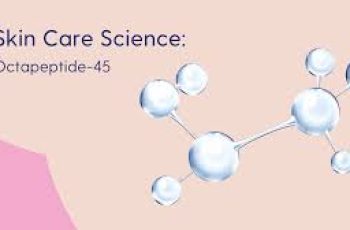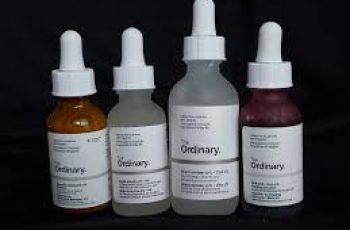
What is the Environmental Working Group (EWG)?
The environmental working group (EWG) is an organization that conducts independent research on various chemical ingredients, consumer products, and more. The object of their research is to help people understand the environmental impact of the things they buy and use on their bodies.
The EWG uses their reports to establish safety and sustainability ratings for ingredients and products regularly, and they update their findings when new research is presented.
Their focuses are broader than simply medical products; they also conduct research on issues regarding agriculture, food & water, energy production, chemical toxicity, and more.
When we discuss ingredient safety in our ingredient library, we regularly refer to the EWG’s safety and sustainability rating because we consider their data fairly reliable, and their research is public.
Their scoring system is between 1-10 when rating ingredient safety and sustainability. 1 is considered the best score, with 10 being the worst score.
Dermatologists, pharmacologists, and many other kinds of doctors use the findings provided by the EWG to help keep their patients healthy.
what is the ewg?
Is the Environmental Working Group trustworthy?
The EWG is considered trustworthy insofar as they do good, transparent research on the most important ingredients in public health.
There have been claims online by various sources that the EWG tends to slightly overstate the danger of an ingredient, but they do not ever understate danger. This is to say, if the EWG thinks an ingredient or product is safe, it likely is because they are so willing to call things dangerous.
Because the EWG is so tentative to deem ingredients or products safe, we consider them a good resource for consumers concerned about the environment and their own health.
On the other hand, products or ingredients with worse safety ratings on their websites might not be quite as dangerous as they appear. If you’re ever looking to use an ingredient or product deemed unsafe by the EWG and you don’t want to take their word for it, their research is available through a search engine within their website.
You can find our dermatologist’s opinions on ingredient safety in this clean ingredient blog or by looking up the ingredient name in our ingredient library.
Who funds the EWG?
Interestingly, the majority of funding given to the EWG comes from individual donations, not corporate pharmaceutical entities.
According to their website, about a third of their funding comes from private charitable foundations.
The remainder of their proclaimed income comes from events, licensing, and “miscellaneous” sources.
Overall, the EWG is remarkably transparent regarding the breakdown of their funding, making an effort to demonstrate their particular interest in keeping people safe instead of pushing bad products.
It’s always important to keep the bankrollers of a research organization in mind when relying on their work. In instances where corporations conduct their own independent research on their own products, that can’t be considered reliable data.
For that reason, it is reassuring to see organizations like the EWG conducting research on a broad swathe of products and ingredients in a manner seemingly unmanipulated by large pharmaceutical companies.
Who works for the EWG?
The research teams as well as the board members of the EWG have a diverse set of professional backgrounds. Research scientists, data analysts, toxicologists, and many other types of people contribute to the research operations at the EWG.
Just as with their funding reports, the EWG is forthcoming with the names and faces of their team members. This is good for consumers because people are held more accountable when their faces and names are public.
The people at the EWG make appearances on national news regularly to state their findings, and are often referenced by popular media outlets (like John Oliver’s “Last Week Tonight.”)
This organization styles itself as a genuine proponent for public health, and each of the people involved with their research seem willing to put themselves into public view. You can check out their team pages on their website as well.
The bottom line is that anybody can do research, but the people at the EWG are actually doctors with an actual interest in public health.
Do we work for the EWG?
We do not work for the EWG, or any particular research council mentioned in our ingredient blogs.
We do not receive any kind of benefits from them for mentioning their work in our blogs, and we do not seek to either. The EWG is one of many sources considered in the construction of our ingredient blogs, but certainly not the only one.
The other major source in safety we consider is the Cosmetic Ingredient Review Board (who we also do not work for). Their data on safety precautions is considered overly cautious by some experts, which honestly makes us comfortable using their grading system.
Otherwise, we look far and wide for compelling, verified research on common skin care ingredients, most often using published journals from within the Dermatology community, and frequently referring to research conducted at the Baumann Cosmetic & Research institute in Miami, Florida.
The EWG is a useful resource for our writing because their focus is on environmental sustainability and personal wellness, which many other organizations do not focus on.
In short; our blogs are composed without any corporate or organizational pressures, they are all written 100% independently. You can find our dermatologist’s opinions on clean ingredients here.
Conclusion
The Environmental Working Group is an organization committed to public health that provides transparency in their funding, research, and personnel.
Through their research, different grades of safety and sustainability are applied to products; this helps consumers make safe choices for their skin care and general wellbeing.
The EWG tends to label ingredients as slightly more dangerous than they really might be, which is frankly a good thing for consumers; it’s better than understating danger by leaps and bounds.
When we indicate the EWG as a safety reference in our ingredient blogs, we are confident in their scoring, unless noted otherwise.
There are other safety organizations for cosmetic ingredients, primarily the Cosmetic Ingredient Review Panel. In many cases for our ingredient blogs, we will use either or both of these references.
If you’d like to learn more about the Environmental Working Group and work they do for public health, we definitely recommend checking out their website so you can form your own critical analysis of their research.
We hope you feel more confident about finding sustainable choices in skin care!
Need help choosing skin care products?
Take the quiz and shop by your Baumann Skin Type,


